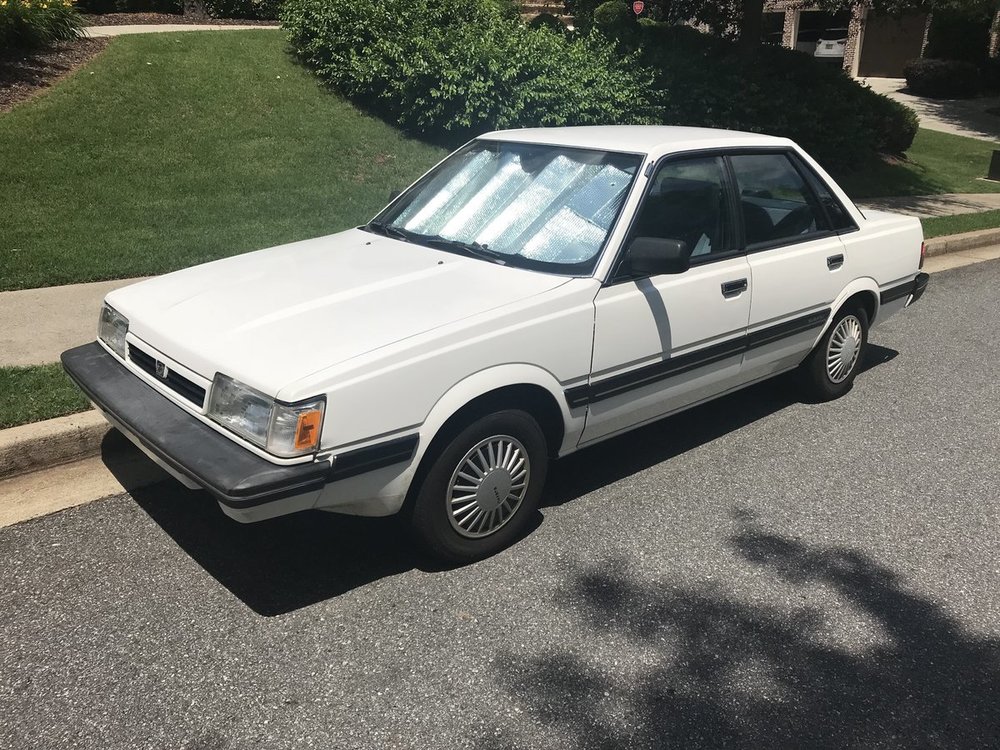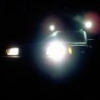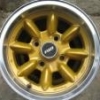Leaderboard
Popular Content
Showing content with the highest reputation on 01/16/19 in Posts
-
this is my 1989 Subaru GL I bought this car on November 13th 2016. it had 76,000 miles on it and I now have over 88,000 miles. I got many things fixed on the car such as a major transmission fluid leak, oil leaks (I have not fixed the head gasket leak, but it is very small), replaced belts, and alternator. I have to get a new ac compressor as well because I am sick of having no air conditioning. the summers are hellish in Georgia. I daily drive this car and when its in the shop it sucks because then I have to uber places and I hate not having my car. I am looking forward to sharing more on this website and I hope you all like my little car!2 points
-
the good thing about the cheap subaru is if you can find out why it's cheap - headgaskets for example - they are not hard to replace and done right you've got an easy 100k vehicle for inexpensive. most truck owners i see dabble with a car for a year or less and are back in a truck. will you beat the odds?! haha. I'd guess price is the driving factor here and finding one of those, or being platform specific, will be unlikely.1 point
-
you might take a look at a used Forester. 2010 could be the sweet spot for you. They are tall-ish so, you'd have a more 'commanding' view like with your pick-up. They are on the lighter Impreza chassis. better fuel economy. Still have some cargo space (though, kinda tall vs low like an Outback or legacy wgn) pretty good in the snow or mud or offroad too. Probably need a stiffer rear sway bar but, easy to install.1 point
-
Legacy might be better than Outbacks due to lower stance. Very hard to get better than 24-25 from our '03 H6 Outback. Gets 19-20 in the city. 4 cylinder might be a couple more mpg and of course works fine with regular fuel. Newer models also should be more fuel efficient so, depends a lot on what you end-up with. www.cars101.com should have published efficiency numbers for various models but, as I'm sure you know, real-world numbers aren't usually as good. Those Vibes/Matrices seem to really last. See them around sometimes - they also had a 4wd version I think?1 point
-
The past weekend was great for flying. I got up both days. On the second day I had an encounter with a plane. Check it out:1 point
-
didn't some Mazdas have a serious issue with transmissions? not sure models/year ranges but, you might research that. maybe they've all been fixed now. Subarus carry more weight and have more frictional loss due to the AWD gear - not known for stellar fuel mileage. many 6 cylinders need high octane too.1 point
-
Good thread dig from 2016! Maybe they’re stuck on the side of the road somewhere with a jammed gearbox waiting for help? Cheers Bennie1 point
-
*Yawn* Boring!! Seriously though, you need to go with a vehicle that will meet your needs and that you’re confident with in purchasing. Don’t buy a car in the evening as the sun sets, paintwork unless really really bad will look ace... until the sun comes up the next morning. My dad did this and while the car was good the paint had many imperfections including swirl marks from a sander used before its last respray All the best in your purchase Bennie1 point
-
Yes you can if you keep the connectors. I can read the codes on my sister’s Gen3 Liberty using the plugs. Nothing has changed in that department for the early OBDII, later gear may have changed but I’m not familiar with that. I’ve also been told on good authority (auto sparky mate) that OBDII Gen2 stuff is much easier to cut down than the OBDI Gen1 looms. Cheers Bennie1 point
-
Lots of great information here! I really wanted to try to get a little more insight into these cars before looking at one since they are a bit different than most of the other stuff out there. I think I can go look this thing over and evaluate it much more confidently than I could have 2 days ago. It also seems there is a lot of information and support going forward if I do buy this one. I think the fluids are something I can plan on if I do buy the car, shouldn't be too much work or expense to make sure it has the right stuff everywhere before I start piling on the miles.1 point
-
the autos have a front diff - sometimes drained mistakenly as engine oil and maybe not refilled - or confused as auto trans drain and filled with atf, ....etc. The manuals share fluid with front diff and are a 'compromise' design so, they can be a little balky at times., need GL-5, NON-synth is best to avoid clashing.. read of these issues a few times thru the years. Just something to watch for. as mentioned already, ideally, all 4 tires will be IDENTICAL brand/model in addition to size. Running a different tire mixed in can be very hard on the AWD system - it can't distinguish smaller 'rolling radius' from poor traction slippage and that can lead to binding on dry pavement - and the weakest link in the system can suffer.1 point
-
OBDII is much easier. I have done dozens of each. You will not have a permanent CEL if you do it right. 95/96 are easy. GD1 point
-
$225 for used? That's nuts. That's a 1 hour job and you can easily get a new pump for $100. You need a new mechanic. GD1 point
-
Later OBD II harness is easier to trim. None of needed wires gtrghh SMJ so y can toss it. Hooking up CEL is EXCACTLY the same....1 wire. Fuel temp sensor is not ned to run engine. That said I have no problem running an OBD I harness/ecu in some of my swaps. OBD I and OBD II harness are completely NOT intaerchangable.1 point
-
As you found, a bad fuel pump just means the motor slows or stops. A timing failure can result in a range of symptoms. If the belt skips a tooth (e.g. due to a failing tensioner) the timing's going to be out a little and degrade performance. Or you can experience what happened to me: The toothed idler seized, effectively stopping the belt. But the rest of the moving parts still had a lot of inertia, so the two passenger side timing (cam) sprockets shattered, smashing the timing cover on that side (that part was the giveaway when I raised the hood - lots of plastic bits), while internally three of the exhaust valves were bent by contact with the pistons. All that meant that there was a pretty abrupt THUNK as the motor stopped. I'm sure others here can relate the symptoms they experienced; perhaps together they represent a thumbnail guide to how the failures can present, though it may be less than definitive.1 point
-
Broken timing belt means engine won’t run until the cam belt is replaced (EJs <95 models), or for 95 and up models, internal repair work and a new cam belt are sorted. If you break a timing belt and have momentum to keep the engine rotating, it won’t “feel right” compared to the same feeling you get when you turn the key off. I hope that makes sense. If it’s just the fuel pump, I reckon you dodged a bullet. Get that cam belt and all idlers replaces if it’s due for replacement. Cheers Bennie1 point
-
We tried to buy a used shaft a couple times when I worked at the Subaru dealership here, and it always took several tries to get one that was even acceptable (thank goodness we had a great relationship with a great junkyard). So yea, I think that's very much regional. We saw many joint failures, and several of them were catastrophic. Carrier bearing failures were VERY rare by comparison. Yes, this probably falls under the DIYer category, and doesn't generally make sense to pay shop labor. There are 2 driveline shops here in town (not a big town, so I assume there are places like this all around the country) that will replace the carrier bearing and both joints for about $250 with a day turnaround. Not to mention new aftermarket shafts, etc. Although, with better tools, I think I could do one in less than 30 minutes, parts cost is less than $20 ea, you could make money. But, for a guy who has a press (Mine is a ~$80 Harbor Freight one, I've done countless wheel bearings, suspension bushings, etc.), a few hours over the weekend might make more sense.1 point
-
1 point
-
1982-83 Nissan 200SX, (maybe?): These cross over to 88921540 not 88921685. who knows but the pinout may be in different order(?) https://www.rockauto.com/en/moreinfo.php?pk=49874&cc=1208562&jsn=942 https://www.rockauto.com/en/catalog/nissan,1983,200sx,2.2l+l4,1208573,ignition,ignition+control+module+(icm),7172 1984 & up NA & turbo Nissan 200sx is same module as optical EA82, Std Prod #LX653. https://www.ebay.com/itm/Ignition-Control-Module-WVE-BY-NTK-6H1206-fits-83-85-Nissan-720-2-4L-L4-/123276988099?hash=item1cb3e18ec3 https://www.ebay.com/itm/Ignition-Control-Module-WVE-BY-NTK-6H1217-fits-83-85-Nissan-720-2-0L-L4-/263839904510?hash=item3d6e1572fe Maybe go look into the NGK/NTK search for crossover to 88921653...1 point
-
got everything replaced except the rotor and caliper. bought a new ball joint and ruined the dust boot trying to put it on. that and some drive axles and i can put it one the ground.1 point
-
Oem or Fel Pro head gaskets Oem only intake gaskets and the o rings for the oil channel to the cam towers. I have always re used the head bolts. If any were really rusty, swapped them for better ones from a spare engine. Heads must be resurfaced to remove the marks from the fire rings. Search for post apocalyptic resurfacing. New water pump and thermostat. Verify that your radiator is in top shape. Fins still attached to the tubes, etc. Other most important thing.... Idle it up to normal operating temperature. Shut down and go to work carefully loosening the intake manifold bolts and head bolts. This deep heating really lowers the chances of breaking them off or stripping the threads. Use a space heater and heat gun to reheat it or keep it hot until you get to the head bolts. Work them back and forth gradually if any are sticky. If you are careful, you can feel the difference between springy and yeilding.1 point
-
Engine is back together and dropped in. The car starts and moves under its own power and didn't overheat or leak any precious fluids in the time we left it running. I'll be doing shakedown runs this evening to ensure all is well. Thanks for all the advice!1 point
-
Well the 86 and 88 Engine difference is carb vs. fuel injection, vacuum hoses, loom or wiring harness and fuel pump pressures. https://en.wikipedia.org/wiki/Subaru_Leone https://en.wikipedia.org/wiki/Subaru_EA_engine You may have an EA71 or an EA82 engine. As as owner's guide it's probably exactly the same. If it's a Haynes or Chilton's manual it's mostly correct. And the most change will be found in the Subaru Service manual for 1986 and 1988. If your book is a copy of Stephenie Meyer's "Twilight", I think we can all agree that the Owner's manual is still a better romantic novel. If your book is the Bible, God's Word never changes, and He loves you very much. Nothing changed between 88 BC and 86 BC If your book is George Orwell's "Nineteen Eighty Four" both engines are carb'ed and it doesn't matter because you're living in perpetual war under omnipresent government surveillance. If your book is actually an 1988 newspaper President Ronald Reagan is the most powerful man in the world and we have a reason as to why the Speedometer runs best at 55 MPH in 5th gear in the NA. What is your book?1 point









.thumb.jpg.96479a473cd1ed4b8bac667c0ee181f5.jpg)


